Everything you need to know about sex toy materials, including safety, lube compatibility, and cleaning!
List of Body Safe Sex Toy Companies
Toxic Sex Toys Video
Shops that only sell body-safe toys:
Peepshow Toys
Liberator

Since the sex toy industry is completely unregulated, trying to find a good, body-safe toy without prior knowledge about materials can be like navigating a minefield. One wrong move and you can easily make yourself sick or irritate your genitals, and nobody wants that. Even if you do buy a body-safe material, you might not know how to clean it or what lubes are compatible with it. So today I’m going to go through all of the most common materials on the market and tell you everything you need to know.
I’m going to start with the body-safe materials, and then we’ll move on to the porous and potentially toxic ones.
![]()
First up, silicone. It’s an awesome, non-toxic material that can range in squish-level from quite firm to pretty damn squishy, and it’s used to make just about every type of sex toy out there. In the sex toy industry, silicone is considered non-porous. This doesn’t mean that silicone doesn’t have pores, because it does, only that those pores are too small to harbor bacteria and fungi like some other materials do. It’s medically non-porous, for all intents and purposes.
Silicone toys are best used with water-based lubricants. They’re also compatible with oil-based lubes, though those can be exceptionally difficult to wash off of them. Because silicone bonds with itself, silicone and hybrid lubes aren’t recommended for use with silicone toys, though whether it will affect them also depends on the types and qualities of silicones involved. It you do want to use them together, get a high quality lubricant like Sliquid Silver and then do a small patch test on the base or another unused section of the toy to see how it reacts.
Also, if you’re going to use a condom on a silicone toy, make sure that it’s either unlubricated or definitely lubricated with a water-based lube. Most condom lubricants are silicone-based, and they don’t tend to list their lube ingredients on the package. This silicone bonding issue does not extend to solid silicone toys touching each other, for the record. If your toys are made of pure silicone, they can be all up in each other’s business without any problems.
Cleaning silicone toys is really simple. Hot water and a mild soap is all you need for solo use with most non-porous toys. If they’re really textured or have any crevices that can trap fluid, I recommend going in with an old toothbrush to make sure those areas are fully cleaned out. Pure silicone toys can also be sterilized. Sterilization methods include boiling for non-vibrating toys or soaking toys in a 10% bleach solution for about 15 minutes before rinsing. Check the manufacturer’s directions for which cleaning methods are okay for your specific toy because it will vary.
Watch out for sketchy companies marketing toys as silicone or silicone blends when they’re really anything but. Check out my Toxic Sex Toys video for ways to suss out if a toy is real silicone or not. I’ve also just put up a huge blog post with a list of trustworthy manufacturers whose toys are the real deal.
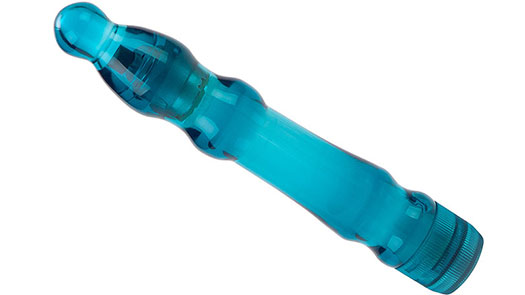
Now, let’s talk about ABS hard plastic. This is another really common body-safe material. Hard plastic toys are non-toxic and non-porous, though you should watch out for toys that are painted (especially with silver or another metallic paint) because that mystery paint can chip off into your body.
Hard plastic toys can be used with any type of lubricant, and they can be cleaned with soap and water. Depending on the toy’s finish and the manufacturer’s instructions, you can also wipe them down with rubbing alcohol or use a 10% bleach solution. Don’t ever boil a hard plastic toy.
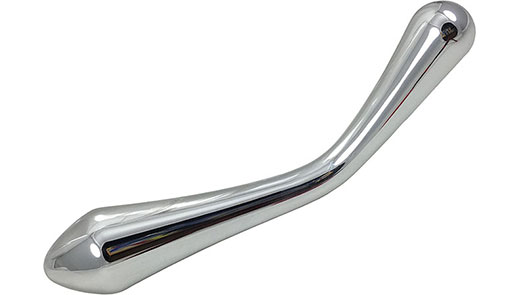
Metal! So shiny, so nice. Both stainless steel and aluminum are completely body-safe and compatible with any type of lubricant. As with silicone, you need to make sure that you buy from a trustworthy manufacturer so that you actually get the material advertised. Soap and water is the go-to for cleaning, but if you need to sterilize you can also boil metal toys. Just make sure to put a dishtowel at the bottom of the pot so that the toys and pot don’t touch — it can harm the finish.
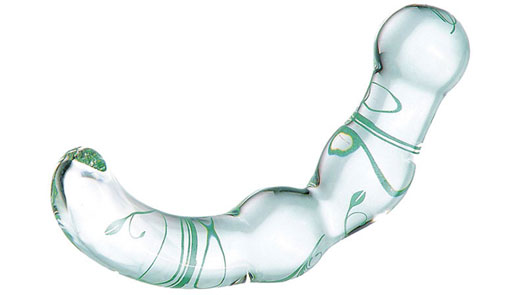
Glass. Glass toys are also body-safe. Just make sure to inspect them for cracks or chips before each use. You can use glass toys with any type of lubricant and clean them with soap and water. You can also sterilize them if needed with a 10% bleach solution. Some glass toys can be boiled – with a dishtowel in the bottom of the pot for safety — but I wouldn’t recommend it in general. As always, see what the manufacturer recommends.
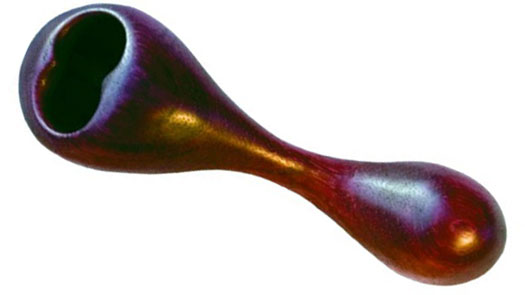
Wood. Yes, wood toys are body-safe, and no, they won’t give you splinters. Try to make sure that the finish is medical-grade, like the one used by manufacturer Nobessence. Wood sex toys can be used with all types of lubricant and gently cleaned with soap and water. Consult the manufacturer for how to disinfect or sterilize your wood toys because it’ll vary depending on the finish used.
Those are the most common materials that are considered completely body-safe. There are a few others such as glazed ceramic, polished stone, and acrylic, but because those are relatively uncommon it’s harder to find information on best practices. Follow the manufacturers’ instructions for how to take care of toys of those materials.
Now let’s get into the next level down when it comes to safety — toys that are non-toxic but porous. They’re often referred to as “body-safe” because they don’t contain any harmful chemicals, but because their pores can still harbor bacteria, viruses, and fungi I still don’t recommend them for internal use.
If you are going to use them internally, I recommend using a polyurethane condom. The mineral oils these toys are softened with can break down regular latex condoms, but you’re definitely going to want some sort of barrier between these toys and your permeable membranes. These toys also shouldn’t be shared between partners who aren’t fluid-bonded, and you should keep an eye out for signs of mildew or the material breaking down.
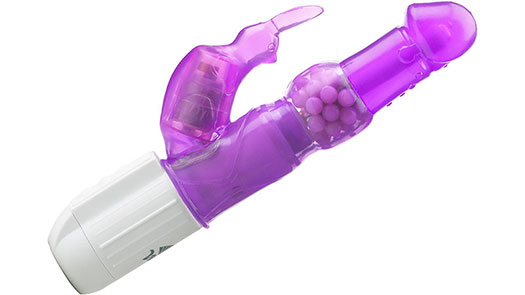
The most common non-toxic but porous materials you’ll see listed as TPR or TPE. These stand for thermoplastic rubber and thermoplastic elastomer respectively, though you’ll sometimes see just elastomer. These are generic names that in reality can refer to a whole bunch of different materials, but they’re all going to be non-toxic. Some TPR and TPE is advertised as being non-porous. This is theoretically possible, but I would only trust it if the toy is from a reputable manufacturer and the material is very hard. In general these materials are porous, especially if they’re soft and squishy.
These toys also shouldn’t be stored touching other toys because material will break down over time and can stain or even fuse together with them. And make sure porous toys are completely dry before you store them to avoid mildew.
TPR and TPE toys are best used with water-based lubricants. I wouldn’t recommend using an oil-based lube with them, and whether silicone is okay depends on the specific toy and manufacturer’s instructions. When in doubt, go with water-based.
TPR and TPE toys can only be cleaned on the surface and not down in their pores. They can’t be sterilized at all. Use regular soap and water or a recommended toy cleaner, and keep an eye out for changes in the toy such as color changes, any sort of odor, or dark mold spots.
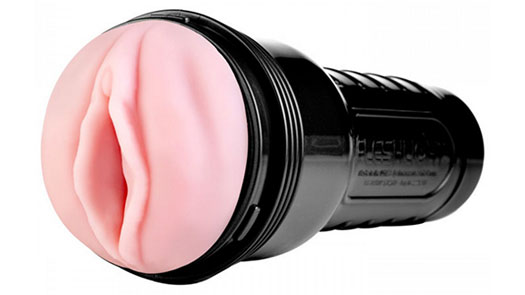
For masturbation sleeves, Tenga and Fleshlight use their own special materials, but they’re all non-toxic. Tenga products can be cleaned with soap and water. Fleshlights should not be cleaned with soap and should only be rinsed with water. And I’d only use water-based lube with either of them.
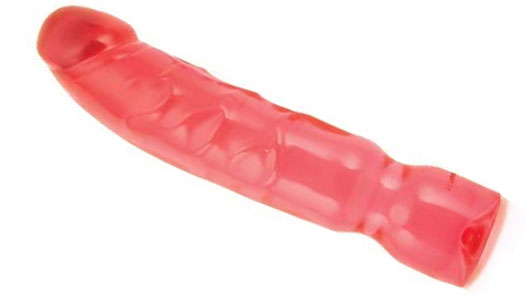
The most dangerous materials are ones that are porous and potentially toxic. These include jelly, rubber, PVC, latex, and most realistic or skin-like materials. I highly discourage you from using toys made of any of these materials, especially internally. If you want to throw a condom on them, again, make sure it’s polyurethane, but condoms aren’t made to protect against toxic chemicals and there haven’t been any studies to show that they do. You could totally use a condom and still experience the itching, burning, nausea, headaches, infections, and other issues these materials are known to cause.
If you insist on using these sorts of toys, water-based lube is your best bet. I don’t know about silicone-based, but you definitely shouldn’t use oil-based. Surface cleaning with soap and water (or with a toy cleaner, but it’ll do the same job) is the best you can do. They can’t be disinfected or sterilized at all, and they shouldn’t be shared between partners.
These materials are incredibly unstable and will break down very easily, so you shouldn’t store them with other toys unless you want a big container full of mystery oils and fused sex toys. Honestly, I highly recommend staying away from these materials entirely.
Whew! That is all the information that I can think of that you might need to know about various sex toy materials, but if you have any other questions, leave them down in the comments!
Thanks for watching, and I’ll see you next time!




